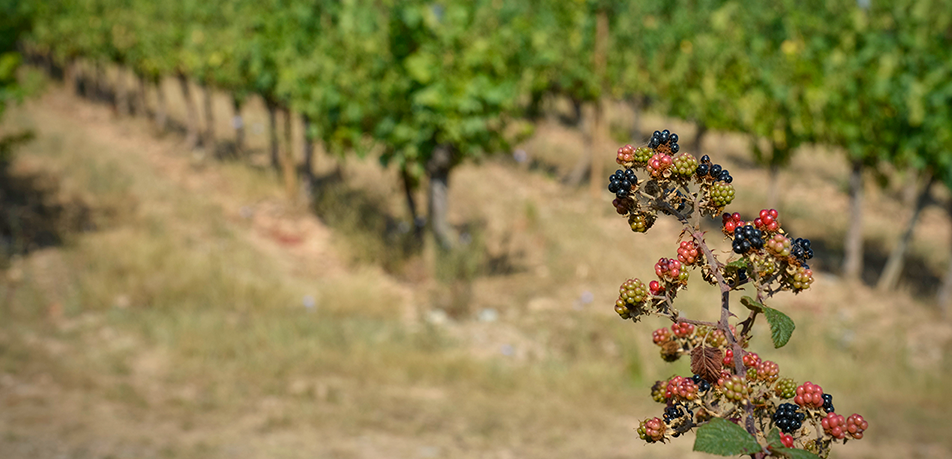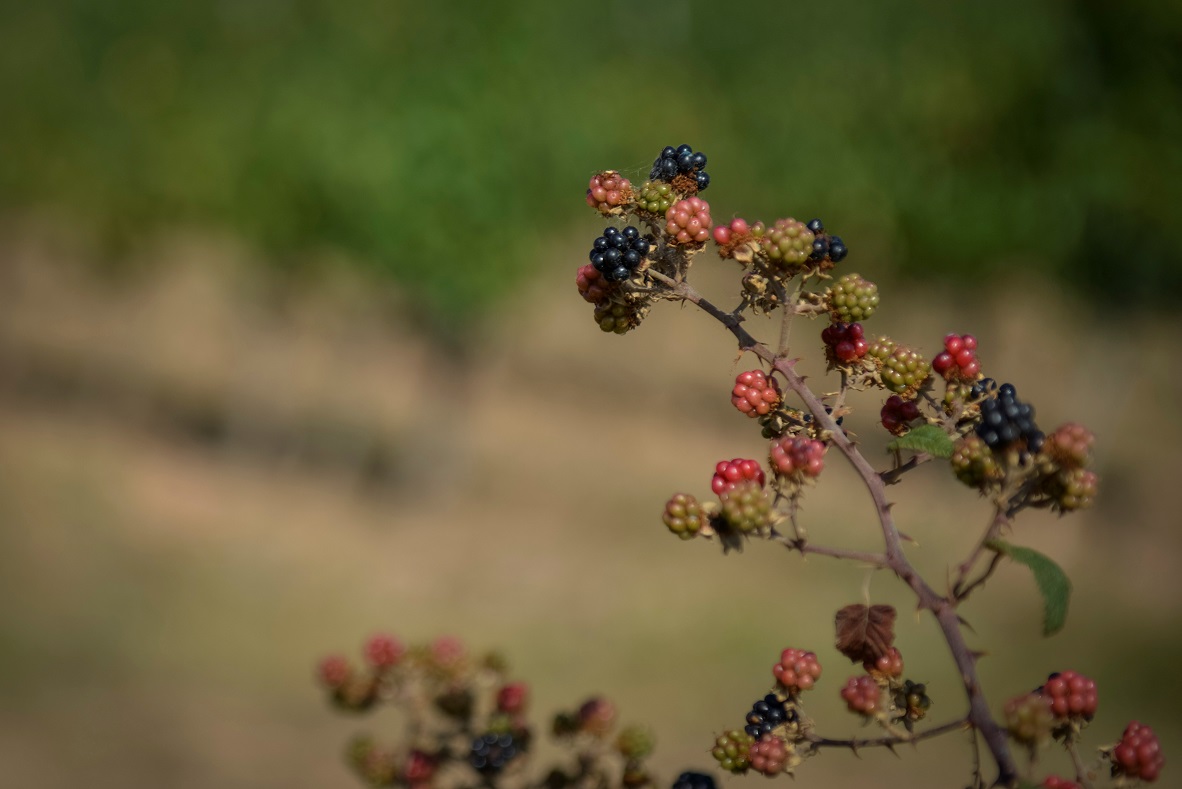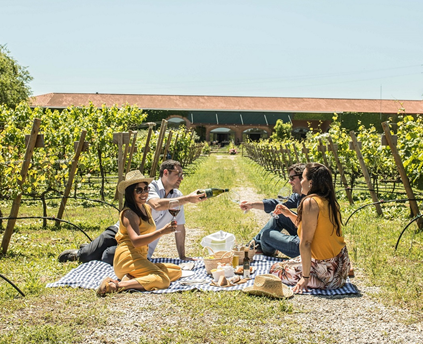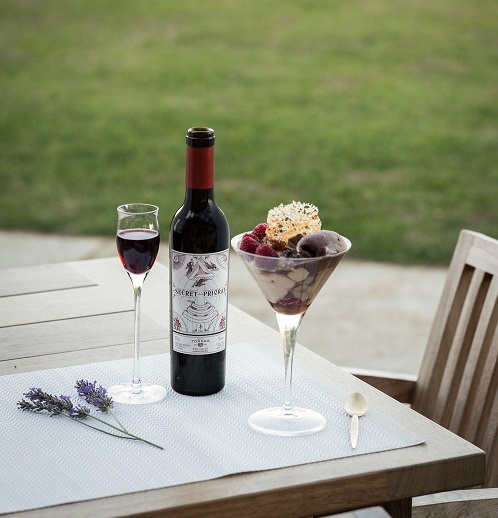Brambly Delights Around the Vineyard

The spirit of the gatherer—that genetic heritage still anchored somewhere deep in human behavior—is the reason why we feel a particular kind of satisfaction when we collect wildly growing fruit in the countryside. Whether its mushrooms, raspberries, blueberries, asparagus, redcurrants, or the red berries of the strawberry tree, what matters is that we picked them with our own hands as we rambled in nature. That's why they taste so good.
Every season has its fruit, its reason to venture into the woods, and its delightful moment of preparing delicious recipes once we return home. As we head into summer, nature beckons with one of the most succulent morsels found in the wild: blackberries, which ripen earlier every year.

[[{"fid":"21810","view_mode":"default","fields":{"format":"default","alignment":"","field_file_image_alt_text[und][0][value]":false,"field_file_image_title_text[und][0][value]":false},"type":"media","field_deltas":{"1":{"format":"default","alignment":"","field_file_image_alt_text[und][0][value]":false,"field_file_image_title_text[und][0][value]":false}},"link_text":null,"attributes":{"height":6306,"width":9449,"style":"height: 334px; width: 500px;","class":"media-element file-default","data-delta":"1"}}]]Blackberries grow abundantly around vineyards
In the Mediterranean, the fruit of this well-known and almost ubiquitous bramble used to ripen in late summer, towards the beginning of September. Like so many other wild fruit-bearing plants, however, the blackberry bush has seen its growth season altered by the constant rise in temperature, making the earlier ripening of its berries yet another bioindicator of climate change.
The blackberry, which botanists classify under the Latin name Rubus fruticosus, is a bush in the Rosaceae family and a characteristic feature of Mediterranean scrubland. With over 75 different species, the plant readily adapts to all kinds of terrain, from the coastline to the high mountains. It grows abundantly on hillsides and along footpaths, in the forest shade, and especially around the edge of fields, vineyards included.

[[{"fid":"21811","view_mode":"default","fields":{"format":"default","alignment":"","field_file_image_alt_text[und][0][value]":false,"field_file_image_title_text[und][0][value]":false},"type":"media","field_deltas":{"2":{"format":"default","alignment":"","field_file_image_alt_text[und][0][value]":false,"field_file_image_title_text[und][0][value]":false}},"link_text":null,"attributes":{"height":660,"width":440,"style":"width: 333px; height: 500px;","class":"media-element file-default","data-delta":"2"}}]]This is the season for nature walks and enjoying the great outdoors to the full. Pictured, a picnic at Mas La Plana, (Penedès).
Given the right conditions, blackberry bushes can grow to a height of two meters and create a tangled, impenetrable thicket with its thorny stems and prickly leaves. The bushes bloom in spring, producing small flowers with delicate white or pink petals. These then give way to small green fruit that takes on a red hue before turning black between July and August, which is when the berries are ready for picking.
As to whether red or black blackberries are better, we have to remember they are the same fruit, just at different stages of maturation. Blackberries are tart and much more refreshing when red, whereas the black ones are sweeter, almost candied. In any case, we shouldn't eat too many berries at once—the red berries may be difficult to digest, and the black berries can be slightly intoxicating because of their high sugar content. This is also true of other wild fruits like those of the strawberry tree or sloe.
Theories diverge on whether it is best to pick berries early in the morning or near dusk. Some wild berry “gourmets” insist dawn-picked blackberries are fresher and more aromatic, whereas others prefer harvesting at dusk when the fruit reaches higher sugar levels and is sweeter.

[[{"fid":"21812","view_mode":"default","fields":{"format":"default","alignment":"","field_file_image_alt_text[und][0][value]":false,"field_file_image_title_text[und][0][value]":false},"type":"media","field_deltas":{"3":{"format":"default","alignment":"","field_file_image_alt_text[und][0][value]":false,"field_file_image_title_text[und][0][value]":false}},"link_text":null,"attributes":{"height":1500,"width":1000,"style":"width: 333px; height: 500px;","class":"media-element file-default","data-delta":"3"}}]]Red berries with Torrelles de Foix cream and lace tuile, a signature dessert of the El Celleret Garden Restaurant (Familia Torres)
If we're going to pick berries with the intention of eating them raw—either in a salad (the flavor contrasts can be delightfully surprising) or in a dessert (with orange juice or yogurt or, even better, a dash of chilled Muscat)—the best place to harvest is deep in the woods. The berries growing along paths are usually covered in dust and have to be washed which—as also happens with mushrooms—takes away some of their flavor. If we're looking to make marmalade, we'll have to fill an entire basket because the berries shrink significantly when cooked. This calls for a picking site where the berries grow in great abundance.
The recipe for making blackberry jam is very simple: cook the berries in water with equal weights of fruit and sugar. At the very end, when the mixture has cooled, add a dash of lemon juice to balance the acidity.
Blackberries are rich in fiber, minerals, and vitamins (especially A and C), and contain high levels of potassium. In addition to jams and desserts, liqueurs made from blackberry juice are also popular in some places.
